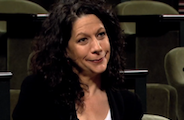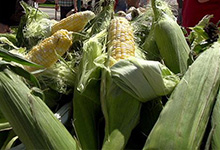Research Summary
This project aims to develop, assess, and deploy a new inquiry-driven, digitally mediated approach to teaching the history of life and environment on Earth.
This project will develop, assess, and deploy a new, inquiry-driven, digitally mediated approach to teaching the history of life and environment on Earth. The approach extends from existing, successful pilot projects, motivated by the need to: (a) better train students in the nature and practices of science; (b) improve understanding of geologic and evolutionary time and Earth system processes, and (c) address the key education question of how game-like virtual environments can be most effectively used in undergraduate science education.
The program will pull together a team of technologists, content experts, and science education scholars to create a coordinated suite of immersive virtual field trips (iVFTs) to locations that teach key insights into Earth's evolution, fundamental principles of geology, and practices of scientific inquiry. Inquiry-driven digital lessons built with an intelligent tutoring system provided by a commercial partner (Smart Sparrow LLC) will guide students through these iVFTs, and embedded social networking tools will facilitate interactions with classmates and instructors. Pedagogy will be optimized by formative and summative assessments using ITS-generated data. Approximately half of these iVFTs are already built or in progress, while half will require new field expeditions. We plan one expedition per year.
The iVFTs will be developed and assessed with three primary undergraduate applications in mind:
- A la carte modules used in a 'hybrid' mode, mediated by a live instructor;
- A la carte modules used fully online, such as for homework or a “flipped” class;
- An integrated sequence of modules that are the backbone of a fully online class.
The long-term goal of these efforts will be to reinvent ASU's GLG 102 (Historical Geology) as a new type of digitally enhanced experience for majors and non-majors, offered in both hybrid and fully online modalities. Additionally, some a la carte modules will be useful in GLG 101 (Physical Geology), and in advanced classes. Therefore, the program will directly impact approximately 2,000 students who take geoscience courses at ASU at the 100-level and above each year in the School of Earth & Space Exploration (SESE), as well as the teaching practices of the SESE faculty and graduate students who teach courses in which iVFTs will be useful. The iVFTs will be promoted to geoscience faculty in the Maricopa Community College District, the largest community college district in the U.S. As opportunities permit, the potential of these iVFTs at other universities, and in K-12, will be explored. Finally, basic versions of the iVFTs will be freely accessible online with the aim of developing a field-oriented geoscience learning community.
The program builds on my experiences with relevant digital learning technologies. This experience includes: the development of the existing iVFT suite with technologist Geoff Bruce and collaborator Steven Semken (http://vft.asu.edu); the development of the interactive online course Habitable Worlds with instructional designer Lev Horodyskyj (http://habworlds.org) and the staff at Smart Sparrow LLC; and initial efforts to assess these education products with science education evaluator Sanlyn Buxner.
The program tightly integrates with my research as a geoscientist and astrobiologist studying the coevolution of the environment and life in deep time. This research involves analyses of samples from many of the same critical field sites that will be featured in many of the existing and planned iVFTs. I also collaborate in research with scientists who are experts in these field sites, and so will recruit them to participate in iVFT development and in the open learning community.




